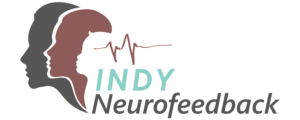New studies show Neurofeedback can reduce pain and increase quality of life for cancer patients

A new study from the renowned University of Texas MD Anderson Cancer Center researching neuropathic pain found that cancer patients using neurofeedback experienced less chronic pain and an increase in the quality of life. The 71-person study was designed by the department of Palliative, Rehabilitation and Integrative Medicine.
The research began by isolating the location of brain activity responsible for the physical and emotional aspects of the patients’ chronic pain. Pain centers were identified through the use of electroencephalogram (EEG) tracking (attaching small metal discs with thin wires on the scalp).
Many hospitals report that Chemotherapy-Induced Peripheral Neuropathy (CIPN) is a very common side effect in cancer patients, affecting 71 to 96 percent of patients after a month of chemotherapy. Peripheral neuropathy is felt in patients as pain, burning, tingling and loss of feeling caused by damage to nerves that control the sensations and movements of arms and legs.
As EEG sensors track and records brain wave patterns, the sensors send signals to a computer to record the results. A computer screen allowed cancer patients to modify their own brain activity through the (EEG) biofeedback/neurofeedback.
MD Anderson study participants completed initial assessments that determined the brain activity related to their pain, the amount of pain perceived, and their quality of life. After neurofeedback therapy was completed the participants repeated the EEG and assessments to determine changes in pain perception, cancer related symptoms, and general quality of life. After neurofeedback therapy, 73 percent of patients reported improvement in pain, less numbness, and reduced how much pain interfered with daily activities.
Through the use of neurofeedback, cancer patients were able to retrain their brains to form new connections and change existing (painful) nerve routes.
Since there is only one medication approved to treat CIPN, which has some negative side effects and is quite expensive, doctors at MD Anderson were very encouraged to see significant improvements in multiple patients’ quality of life after utilizing neurofeedback therapy –especially since there were no side effects.
“Even better,” says Leanne O’Neil of INDY Neurofeedback, “neurofeedback is customized to the individual and is relatively inexpensive. It not only works for those in pain, it also works for those seeking to retrain their brains to promote better health habits. Neurofeedback is a wonderful non-invasive, non-addictive tool to address all kinds of pain, discomfort and suffering.”
